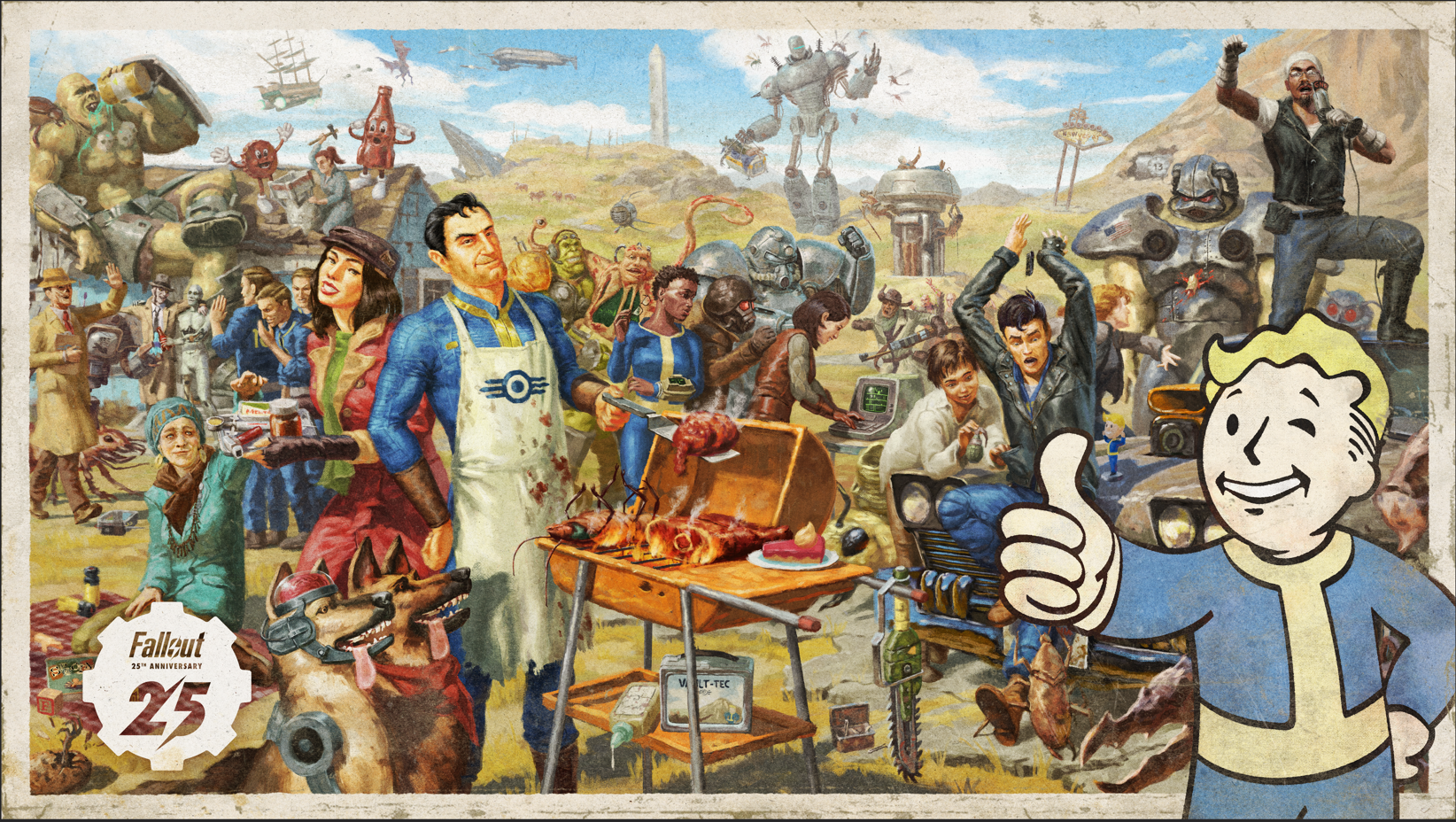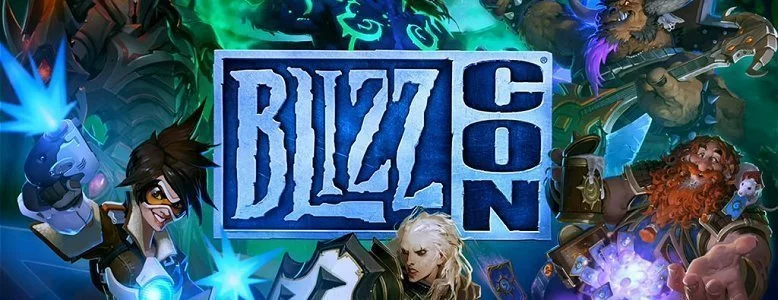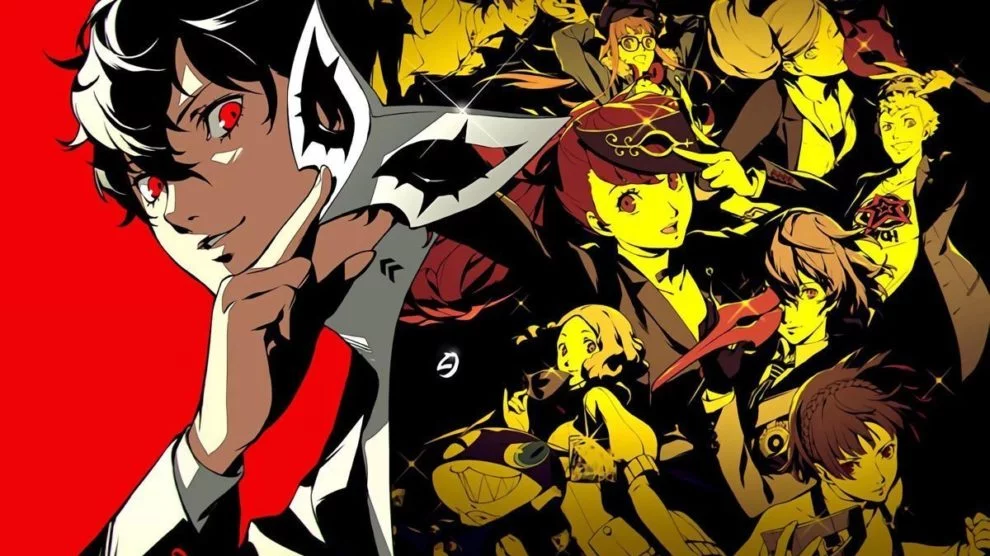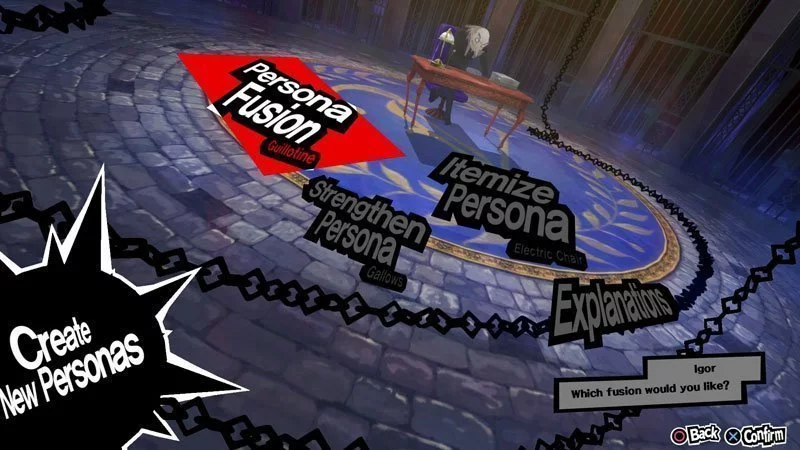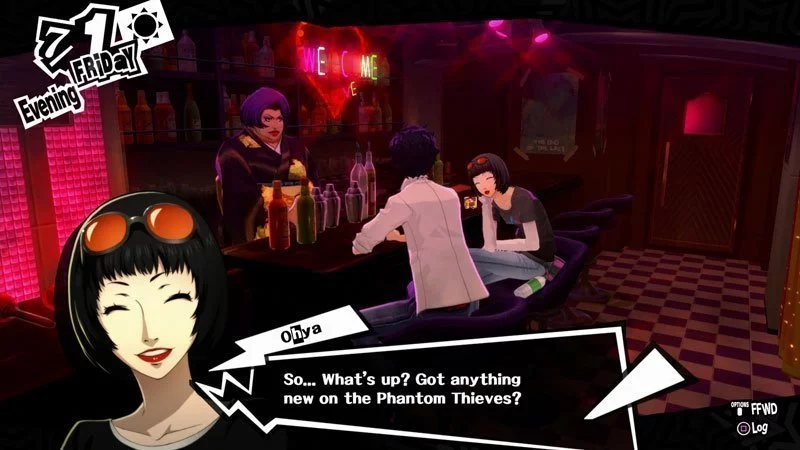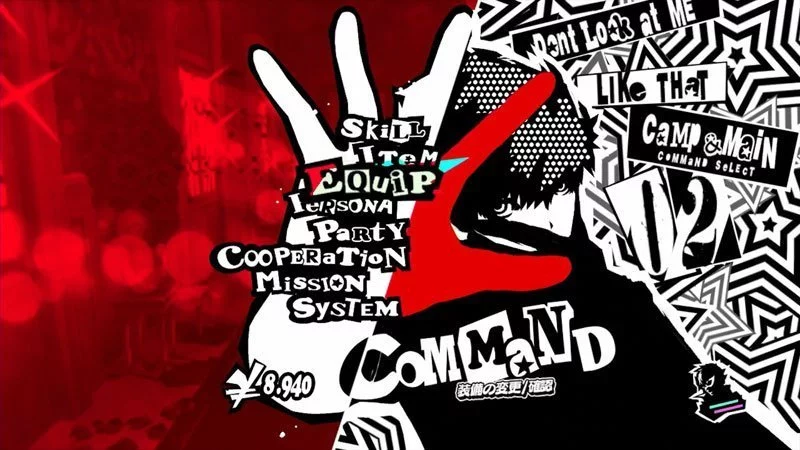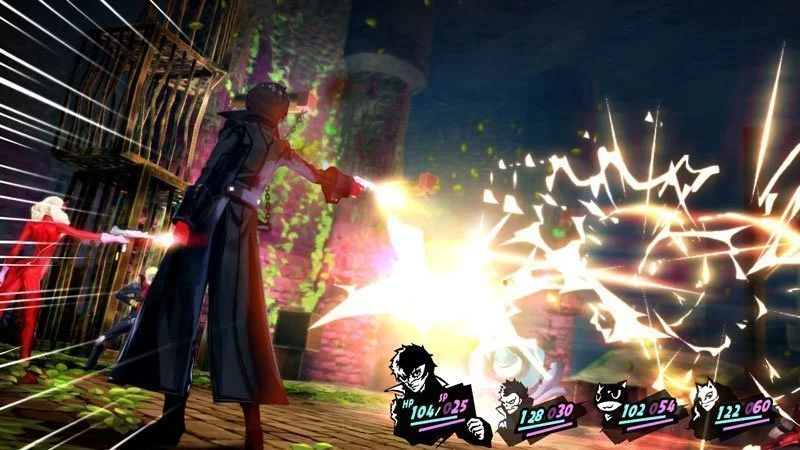I’ve been enamoured with the Persona series as a result of Persona 4 Golden. The deft mixing of psychology, daily teenage life and darker themes of society — along with all the Japanese cultural nonsense that flies right over my head — is a near-perfect combination. While it’s been a long time in the making, Persona 5 Royal, an expanded version of Persona 5, is finally here to break the streak of P4 spinoff titles and give us an all-new adventure with all-new teens.
Set in the busy metropolis of Tokyo, Persona 5 tells the story of a country boy sent to live with his legal guardian after being expelled from his former high school for a crime he didn’t commit (for sake of convenience I’m going to use the protagonist’s name from the manga adaptation, Akira Kurusu – but you can choose his name at the outset). His reputation has followed him, and playing as Akira you find your new school of Shujin Academy to be a less than welcoming environment. Before long you catch wind of a dark underbelly to the school and find yourself in league with two fellow justice-loving teens, leading you to right the wrongs of society — stealing the innermost secrets of society’s worst as the “Phantom Thieves of Hearts”.
Gameplay is split into two distinct but concurrent lanes: your daily life as a class-attending, homework-doing, friend-connecting student, and your nightlife as a magically-powered super-thief who can summon monsters connected to your personality. I realise that’s a loaded sentence for anyone not familiar with the franchise. The eponymous Personas are creatures that act as a mask that protects you, summoned from the collective unconscious of humanity. Persona users can take advantage of that power to defend themselves against Shadows, the dark side of the mind. For those curious, these are all concepts rooted in Jungian psychology.
Curiously, these titular Personas take the form of literal masks worn by the characters, where in previous titles they’ve taken the form of tarot cards and guns (don’t ask). While your other party members have a single unique Persona rooted in their personality — themed on thieves and rogues from history — Akira has the power of the wild card, letting him summon both his own unique Persona, Arsene, as well as many others. These can take the form of monsters, angels, cute little snowmen or — for the truly unlucky — a giant penis-shaped Persona called Mara.
While the game professes to occur during the year 20XX, it’s clear this is set in an analogy of the present day. Where Persona 3 used the Dark Hour and Persona 4 involved falling into televisions, the Phantom Thieves of Persona 5 reach the Metaverse – the game’s series of dungeons, known here as Palaces – via a mysterious smartphone app that appears on each of their phones as they’re looped into the story. It’s so delightfully millennial that you can just taste the Baby Boomers getting angry about it. Each Palace is a curated and set map design, differing from the traditional (but not necessarily GOOD) procedural generation the series is known for. That said, you’ll eventually gain access to Mementos, randomly-generated dungeons utilised for the game’s sidequests instead.
Throughout the game you’ll also get text messages from your party and allies about the events of the story, as well as providing shortcuts to jump straight to Social Link events or the Palace. It’s the same kind of relationship- and character-building dialogue of the previous games, but delivered in a format that makes it optional. Don’t want to dive too deep into this world? You don’t have to.
This game is stylish as all hell. Every facet of the interface is dripping with cool, from Akira talk-to-the-handing the screen to open the menu, to the rough-cut letterboxing borders, to the flashy combat wrap up menu that somehow makes listing a bunch of numbers look interesting. While Persona 4 Golden had a great interface on the Vita, P5 may have the boldest UI I’ve ever seen in a game. Every menu transition is unique and embodies the brash nature of the Phantom Thieves. Moving from one scene to another always involves a different animation – varying whether you’re moving around the city or school, riding the subway or travelling to one of the game’s Palaces.
The combat interface is a vibrant wheel of options exploding out of each character, with quick button prompts to speed up what could be a very plain and simple grind. Simple UI additions, like highlighting enemy weaknesses and including a shortcut button to automatically select the optimal attack as you fight help to streamline the experience without taking anything away from the established formula. It doesn’t matter how many times I go into the game’s stark red and black menu to change Personas, I always love how good it looks. The soundtrack and audio effects only serve to punctuate how much this interface empowers you to feel like a social justice bad-ass – each acts as the punctuation on a simple action to make it seem like you’re doing something really cool.
Combat mirrors the basic structure of previous Persona games, albeit with a few tweaks. At its core, the combat system is about juggling enemies and playing to their weaknesses. Almost every enemy will have one or more attack weaknesses: elemental, physical or otherwise. One enemy may be weak to fire attacks, while another may be sensitive to Curse attacks or gunfire. Knock one down and the game will give you 1 More, letting you take an additional action with that character. After expanding your connection with some party characters you’ll be able to utilise Baton Pass, letting you trade off to another character for that 1 More with a slick high five. This is especially handy for moving between different characters and their available attacks to continue knocking down your foes. Take down the entire enemy party, and you’ll be ready to take action against the whole lot. This includes the All-Out Attack, a series staple that sees your entire group doing massive damage against all enemies (complete with a slick as hell combat conclusion shot if you kill them all).
Persona 5 differs in that it offers the option to instead talk to the enemy, a throwback to the Shin Megami Tensei series that Persona is technically a spin-off from. When speaking to enemies, you can make one of a few different requests — you can demand an item or cash in exchange for their lives (at which point all remaining enemies will peacefully escape) — or you can demand they join you as a Persona. To do this you’ll need to successfully navigate through a conversation to convince them to ally with you. Each falls into one of a few archetypes — Timid, Gloomy, Aggressive and so on — which will decide how they react when you answer their questions. Succeed, and you’ll recruit a new Persona; fail, and you’ll either get a consolation item prize, or simply return to combat. It’s an extra layer of complication, but feels far more interactive than the random Persona recruitment after battles of the two prior titles.
The characters themselves aren’t as archetypal as their predecessors, but do seem likeable. Your core squad from the outset consists of Akira the playable blank slate, Ryuji the bad boy with a heart of gold, Ann the beautiful half-American outcast, and Morgana – your required Animal Thing companion, a precedent set by Persona 4’s Teddie. Another five playable and support characters join the Phantom Thieves over the course of the game. Suffice to say that each character seems more well-rounded and fully realised in this outing, and the present-day-adjacent setting makes it easy to relate to their problems (even for this reviewer who is well clear of his high school days).
Your Social Links – here labelled as Confidants in keeping with the thief motif – stick to the established norm, but with added layers. Made up of both Phantom Thieves and your contacts in the real world, each Confidant requires you to spend time with them and complete narrative choices correctly to raise their rank. That, in turn, both assists you in crafting stronger Personas, and also grants skills and buffs in-game. Party members unlock skills such as the Baton Pass mentioned above, and other Confidants such as your shady doctor friend will expand their inventory or support actions to help serve your quest (even the shop interfaces are fly as hell). It’s not a huge leap from previous games, but it’s nice to feel like spending time with these people is having a more visible impact on your experience.
I’ve barely scratched the surface of Persona 5 in the time I’ve had with this game. The loop of school > event > investigation > Palace infiltration > story > final confrontation is satisfying, and as is typical of Persona can be pursued at your own pace – bearing in mind that every extra day spent dungeoneering is one less day you could be holding down a part-time job, learning how to make coffee from your reluctant caretaker, reading a book that will make you more Gutsy or any number of other events.
Things are largely Persona 5 as you may have played before, though Royal adds new content in the form of a new party member called Kasumi, a grappling hook to get to previously unexplored locations, new weaponry, armour, enemies, events, cutscenes, a location called Kichijoji and further unlockables. That said, I’m not sure I’d recommend it to those who’ve just finished the original. Even with homophobic scenes cut here in the west, and gun ammo refilling after single battles, it’s ultimately still the same (long!) game with a little more to do. Though if you’re a fan of JRPGs and didn’t get into Persona 5 yet, than Royal is a no-brainer.
Persona 5 — and the expanded Persona 5 Royal — are both beautiful balancing acts; ones that feel eternally stressful unless you give in and enjoy them rather than aiming for the perfect run. There’s so much going on here — as always for this series — that you will never run out of things to do, just time to do them all in. It’s weird to not be able to take the game on the go (R.I.P., PS Vita), but the day-by-day nature of this format enables both short-burst sessions as well as long sessions on the couch. If you’ve ever wanted to dress up in a cool coat and fight social crime, this is the RPG for you.
 |
|
The good
|
The bad
|
This review was largely based on our original Persona 5 review. Persona 5 Royal was reviewed using a promotional code on PS4, as provided by the publisher. Click here to learn more about Stevivor’s scoring scale.
This article may contain affiliate links, meaning we could earn a small commission if you click-through and make a purchase. Stevivor is an independent outlet and our journalism is in no way influenced by any advertiser or commercial initiative.


